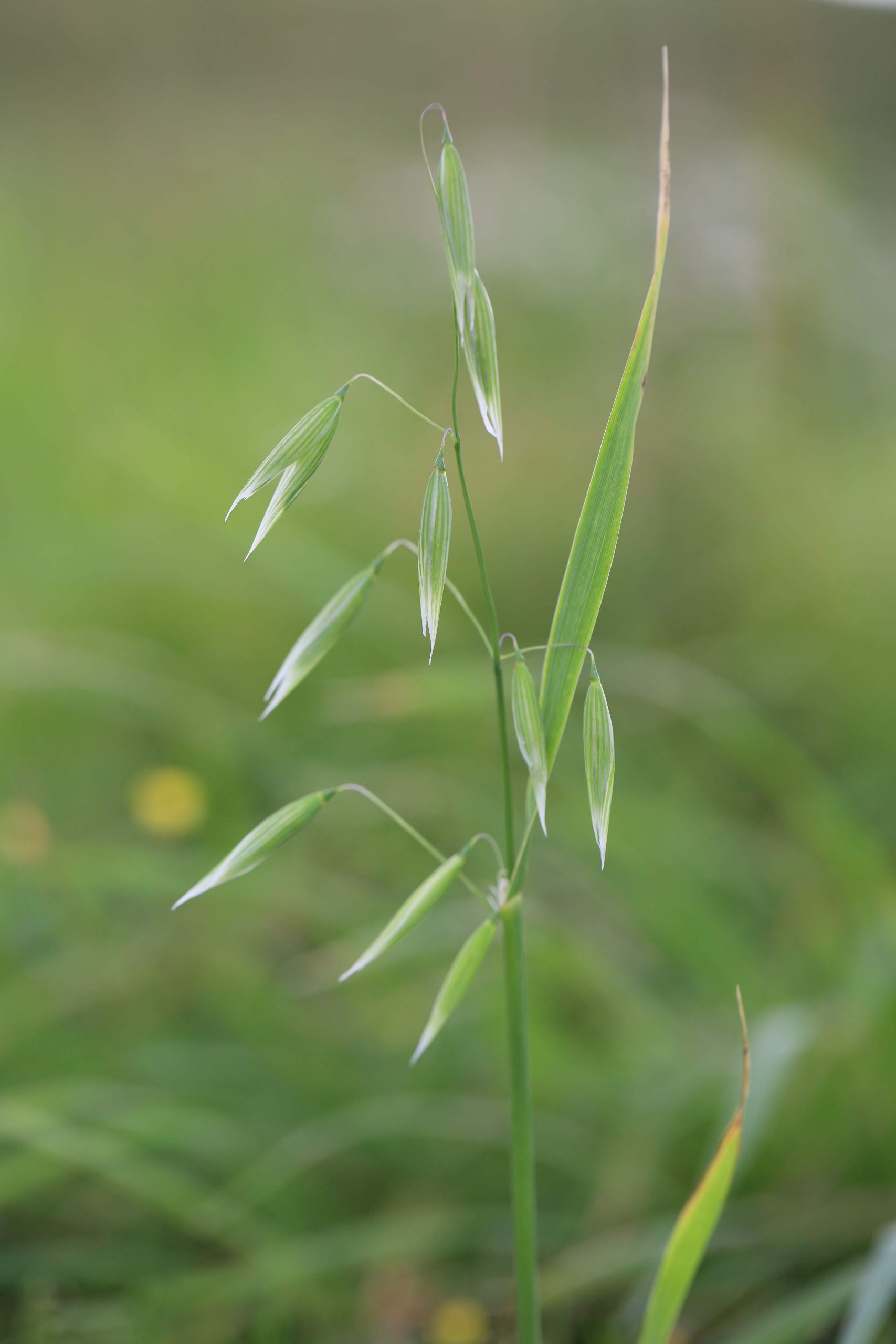Description
Like most oats Avena fatua has loose panicles of comparatively large spikelets possessing visibly bent awns. It is a stout annual with a stem about 150cm tall and nodding panicle. Flowering and fruiting from mid-June to mid-September.
Habitat Information
Wild Oat is an archaeophyte probably of Mediterranean origin and entered Britain with the spread of agriculture. Although always common over the last sixty years it population has increased greatly. It is common throughout most of England and is frequent in parts of Wales and Scotland. Often abundant as a weed of arable fields it is also found in other disturbed ground such as headlands and verges. It grows rapidly as a seedling and can flower within six weeks of germinating. It is mostly self-fertilising and produces a large number of seed. This coupled with its ability to cope with a wide range of soil types no doubt contributes to its success.
The wild oat and other related species are useful educational resource for demonstrating kinetic mechanisms of seed dispersal and self-planting. Take dry ‘seed’ and place a small drop of water on the twisted lemma awn. As it absorbers the water the awn uncoils and moves the seed across the ground and can even help corkscrew it into the ground.
Growing Information
It needs a bare earth site other than that it is easy to grow and can be sown any time of the year.


